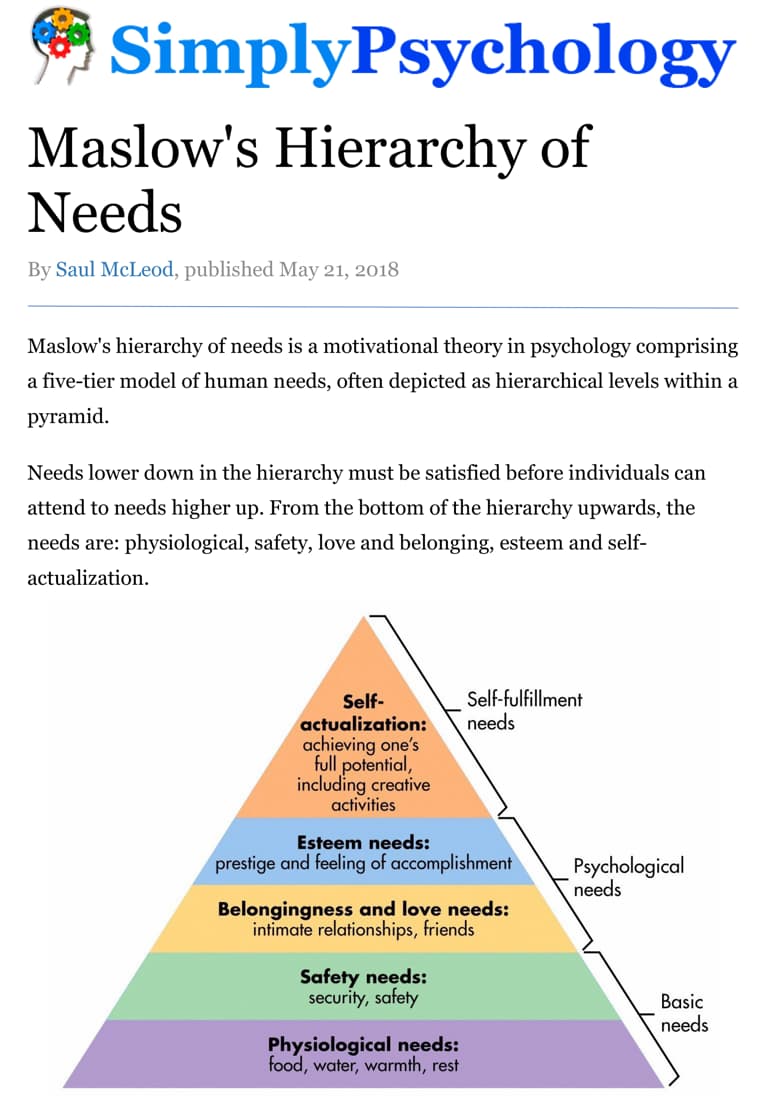Maslow’s Hierarchy of Needs
What is Maslow's Hierarchy of Needs?
Maslow’s hierarchy of needs is a motivational theory in psychology comprising of a five-tier model of human needs, often depicted as hierarchical levels within a pyramid.
The theory states that humans are motivated to fulfil their needs in a hierarchical order. This order begins with the most basic needs before moving on to more advanced needs.
Surviving to Thriving
What is Maslow’s hierarchy of needs? And why is this important to our own self-development?
Maslow’s hierarchy of needs is a motivational theory in psychology comprising of a five-tier model of human needs, often depicted as hierarchical levels within a pyramid.
The theory states that humans are motivated to fulfil their needs in a hierarchical order.
This order begins with the most basic needs before moving on to more advanced needs.
The five levels of human needs are the following:
Physiological needs: Food, water, clothing, sleep and shelter. These are the bare necessities for anyone’s survival.
Safety and security: Once a person’s basic needs are satisfied, the want for order and predictability sets in.
Love and Belonging
Self-esteem: Encompassing confidence, strength, self-belief, personal and social acceptance and respect from others.
Self-actualization
Carl Rogers, who is an American psychologist (1959), believed that humans have a basic motive, that is the tendency to self-actualise, i.e. to fulfil one’s potential and achieve the highest level of human beingness we can.
Rogers describes an individual who is actualising as a fully functioning person.
How would you apply Maslow’s hierarchy of needs in your life?
The most basic level of Maslow’s hierarchy of needs covers physiological needs, the basics of what we need to survive and simply can’t live without, such as food, air, water, warmth, sleep, and shelter.
Once safety and security are in place and order and predictability set in, an individual will naturally want to progress further seeking love and belonging through respectful relationships.
If found this will then increase a person’s self-worth, self-esteem and confidence. Once the 4 tiers are completed the last stage is for a person to reach self-actualization.
What does a self-actualizing person look like?
Self-actualization involves a strong sense of purpose and self-awareness; self-actualized people are accepting of others as well as their own flaws. They don’t try and become what they are not. They enjoy learning and they enjoy the journey much more than the destination, reaping the benefits of spirituality and self-growth.
In Psychology, self-actualization is when you’re able to REACH YOUR FULL POTENTIAL.
This can be a difficult goal to reach and is considered the exception rather than the rule as most people are preoccupied with other pressing needs.
It is possible though to reach self-actualization and generally speaking self-actualized people live independently as they don’t structure their lives around the opinions of others.



